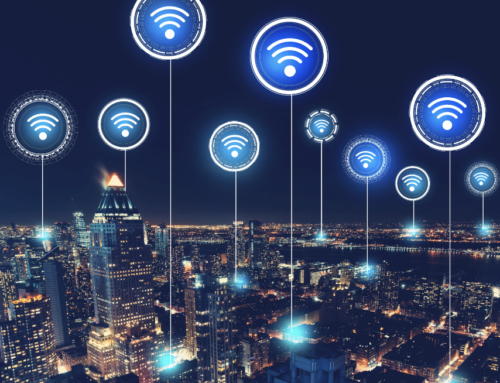
Multifamily property owners have been asking a lot of questions about 5G cellular networks:
- Will 5G replace home and office internet connections?
- Will 5G replace Wi-Fi?
- Will 5G replace the cable company?
The short answer is – 5G connections should be seen as a complementary product to high-speed internet connections, not a replacement. In fact, Verizon, AT&T, and the “big box” cable companies do not want all your PCs, televisions, and connected home office equipment overloading their mobile phone networks. Their networks simply are not designed to handle it at this time. We’ll see what the future holds.
A Wall Street Journal article published on June 19 included input from Patrick Moorhead, president of technology consulting firm, Moor Insights & Strategy. In this article, Moorhead underscores this stance, revealing, “….they’re concerned about potentially data-hungry devices like PCs overwhelming their networks.”
Also, when these companies promote 5G services, it’s important to read between the lines of what they’re communicating as consumer benefits. For example, you will see two product categories actively promoted for transformation in relationship to 5G:
Devices requiring very little data – Pay close attention to the devices AT&T and Verizon are using as proof points. It’s important to note, the devices these companies reference don’t use a lot of data, which may be well supported by a 5G connection. Examples include smart thermostats, connected household appliances, and other miscellaneous things we might use around the house or office. These types of devices require very little data to operate, versus downloading a movie, streaming data for a Zoom call, or watching Netflix on your home connection, all of which require a high-speed connection.
Devices typically located outside – Additionally, many of the devices cellular and cable companies mention are those commonly used in outside environments. These may include parking meters, stadiums connections, autonomous cars, or your mobile phone while you’re walking down the street, for example.
Will 5G replace high-speed internet connections on my property?
Many apartment owners and managers ask Discernity, “Will 5G networks do away with internet connections at our apartment complex?” Be sure to notice that even the 5G service carriers are not claiming 5G to be a suitable replacement for home or apartment internet connections. Instead, it is considered complementary product. That is the key!
5G networks have a lot of promise due to high speeds and the low latency. Yet, every coin has two sides. The other “side” of the 5G coin is short travel distance capability, and its struggle to permeate common surfaces. For example, is you’re standing outside and are adjacent to a 5G mobile tower, you’ll likely get 1-Gigabit speeds with amazingly low latency. However, if you aren’t close to the tower, high speed and low latency drop. Also, if there is something between you and the tower, such as leaves on a tree, windows, or the brick or siding on your home, then these drop even further. Even rain can impede a 5G cellular signal.
Occasionally, you may find articles and mentions online discussing the possibility of 5G cellular networks transforming manufacturing plants, hospitals, and other infrastructure. Reality check – have you ever tried to get a mobile signal in a hospital? It can be tough! In many cases, 5G doesn’t even transmit as well as current 4G and LTE networks, as cited in an independent study summarized on FierceWireless.com.
The objective of this study conducted by Tutela was “…to determine how different an experience AT&T consumers would receive with an upgraded 5G device. The short answer: not much.”
The inability of 5G to travel long distances combined with its struggle to function smoothly indoors is just one reason why high-speed Wi-Fi connections will remain vitally important to our everyday lives. Discernity looks forward to advancements and improvements to 5G networks, along with the building of more networks to accommodate the anticipated growth of Wi-Fi 6.
Wi-Fi 6 is available now and has higher speeds and better transmission than 5G cellular networks. There aren’t a lot of devices ready to fully take advantage of Wi-Fi 6 features just yet, but that is beginning to change. So, in regard to discourse around 5G networks replacing Wi-Fi in the foreseeable future, you can be assured 5G will remain a complementary, and not replacement product for residents in multifamily dwelling units.






